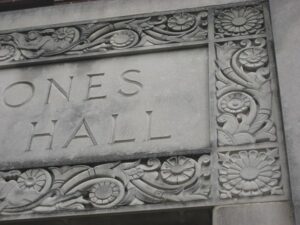Like many community colleges, WCC’s fall enrollment dropped. The Winter semester has not yet begun, so it remains to be seen whether enrollment will recover. But as the Board of Trustees considers bond issues, it should also take a long hard look at enrollment.
Prior to the pandemic, the WCC administration claimed that enrollment was declining. That was demonstrably untrue. No one knows what will happen with enrollment when the pandemic subsides. For the sake of argument, let’s say it does drop. Let’s say that the WCC administration’s worst fears come true and enrollment declines substantially.
That is exactly the reason to avoid bond issues. Student tuition and fees comprises about 30% of the WCC budget. If enrollment declines, that portion of the budget is at risk. Tuition goes into the General Fund, which the Trustees use to guarantee bond payments. If WCC takes in less revenue, then adding more debt to the General Fund increases the pressure on what will already be a tight budget.
To make matters worse, a decline in enrollment will not escape the ratings agencies. The ratings agencies are already bearish on the higher education sector. With the debt from the Health and Fitness Center that WCC is already carrying, adding more debt to pay for the “Advanced Transportation Center” and going back to the well to pay for the SC Building rehab is going to place a lot of stress on the WCC budget.
Raising tuition is not a good recruiting strategy. Historically, large tuition increases at WCC have produced significant drops in enrollment. So, if the Trustees jack up the tuition to pay for construction, enrollment will drop again. Which will increase the pressure on the General Fund even more.
Lather. Rinse. Repeat.
Eliminate bond issues and cut expenses instead
A better strategy for reducing pressure on the General Fund is to cut expenses. WCC should not build anything. The campus does not need additional academic space because – if you believe the administration – the enrollment is about to crater. So, eliminating bond issues for construction will reduce pressure on the General Fund while enrollment remains low.
Reducing the size of the administration will also reduce pressure on the General Fund. WCC has gone on an administrative hiring bender for the last decade. It now spends more than $3M more (in inflation-adjusted dollars) on administration than it did a decade ago. Returning the administration to its former size will reduce overhead and return badly needed cash to the General Fund.
Refinancing the remaining bonds on the Health and Fitness Center may also be a way to cut the taxpayers’ losses on that boondoggle.
The community needs an honest accounting of how much these summer trades programs actually cost the College. Realistically, we need to understand all of the expenses associated with these programs. The revenue they return to the College must be weighed against the expenses and their significant disruption to the campus.
WCC’s chronically starved maintenance actually increases the cost of maintaining the campus. Not only does delay increase the scope of the repairs, but it also incurs an inflationary penalty. The Board of Trustees should prohibit the Administration from reducing the maintenance budget for the campus. It should also require the Administration budget for maintenance based on industry standards for commercial buildings.
If enrollment drops or remains depressed, multiple bond issues against WCC’s General Fund would be fiscally irresponsible. It would be a breach of the Trustees’ fiduciary responsibilities to the taxpayers of Washtenaw County. It would also be a financial disaster for WCC students.
Photo Credit: Thomas Hawk, via Flickr



































